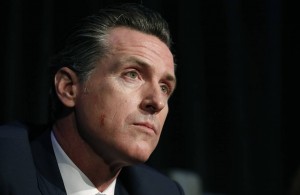California Single-Payer Dreaming
Sacramento offers a preview of the 2020 Democratic platform.
As California liberals go, the Democratic Party often follows. So it’s instructive, if not surprising, that Golden State Democrats are responding to the failure of ObamaCare by embracing single-payer health care. This proves the truism that the liberal solution to every government failure is always more government. Many on the left championed single-payer in lieu of ObamaCare’s regulations and subsidies, but in 2010 it lacked enough support among Democrats in Congress. But with premiums soaring and insurers fleeing the Affordable Care Act exchanges, progressives are now trying to pivot to achieve their longtime dream. California Lieutenant Governor Gavin Newsom, the front runner to succeed Jerry Brown as Governor next year, is running on single-payer, which shows the idea is going mainstream. At the state Democratic convention last weekend, protesters shouted down speakers who dared to ask about paying for it. The state Senate Appropriations Committee passed a single-payer bill this week, and it has a fair chance of getting to Mr. Brown’s desk.
The bill reflects the left’s Platonic ideal, with the promise of free care for everyone for everything. Patients would be entitled to an essentially unlimited list of benefits including acupuncture and chiropractic care as well as “all medical care determined to be medically appropriate by the member’s health care provider.” They could see any specialist without a referral. Co-pays and deductibles and charging premiums would be prohibited. There would thus be no restraint on health-care utilization and costs. Patients could get treated for virtually any malady by any physician at no cost. This is probably what kids educated at California’s pre-eminent universities envision when politicians and professors promote single-payer: an efficient, free, munificent socialist paradise. But even paradise has a price. The Senate committee pegged its bill’s cost at $400 billion a year, which is likely conservative since analysts assume utilization rates close to those for Medicaid in which patients lack access to many specialists. About $200 billion could be re-allocated from other government health-care programs including Medicaid and Medicare, though this would require federal waivers. The rest would require higher taxes.
More From The Wall Street Journal (subscription required):














